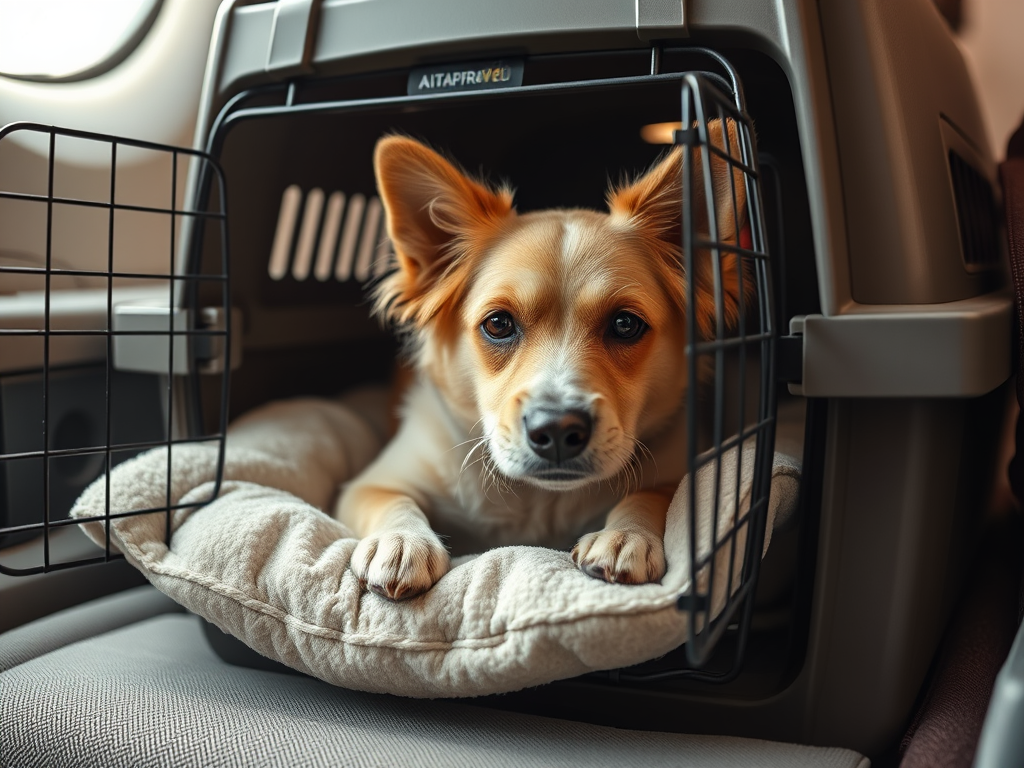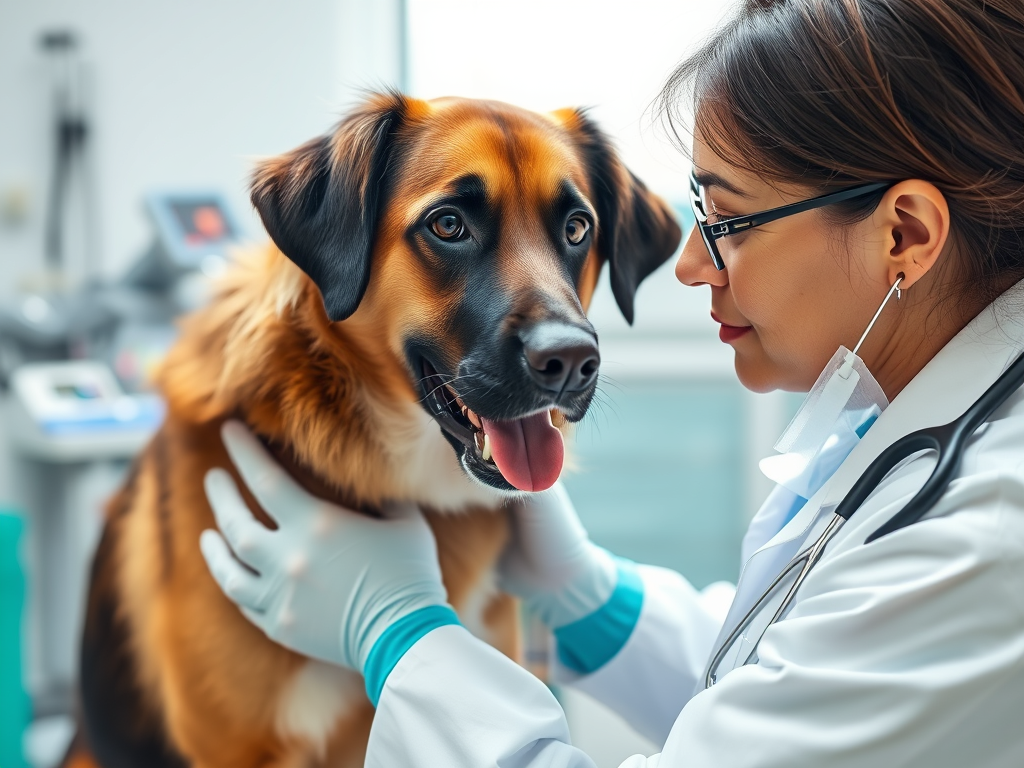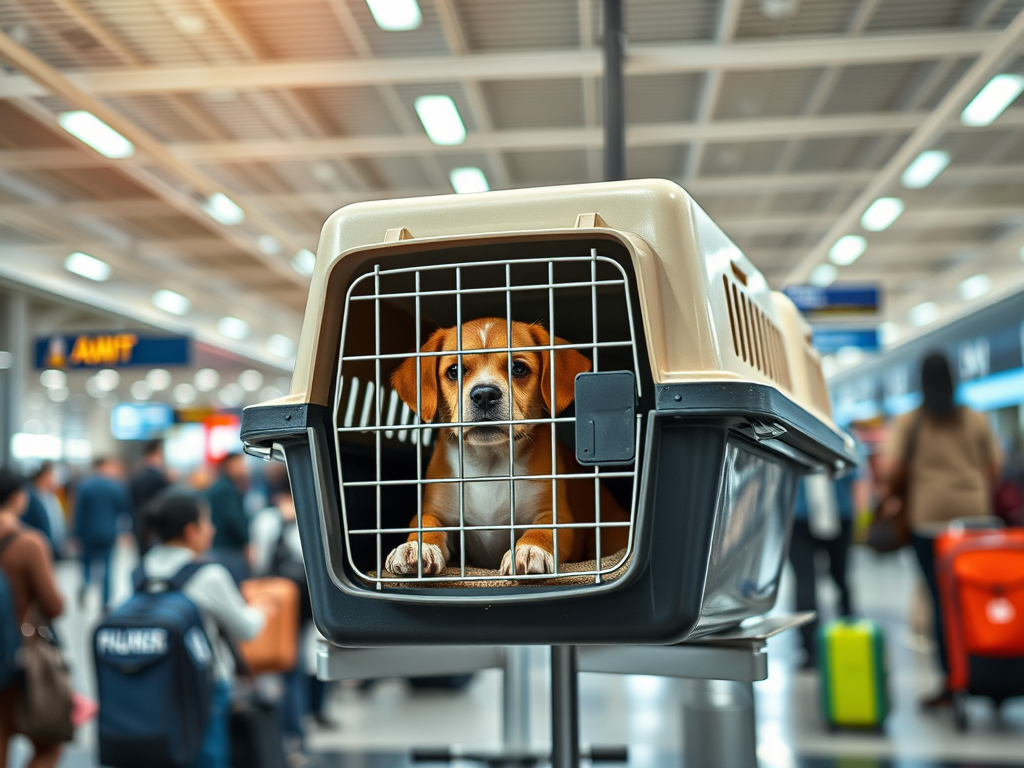Are you moving abroad with pets to any destination? Discover expert tips for international pet relocation, including import requirements, health certificates, quarantine rules, and costs. Guarantee a smooth journey for your furry friend with our comprehensive guide.

Table of Content
- Getting Started with International Pet Travel
- Understanding Pet Import Requirements
- Health Certificates and Veterinary Documentation
- Quarantine Regulations Around the World
- Choosing the Right Pet Transport Method
- Preparing Your Pet for the Big Move
- Cost Breakdown for Pet Relocation
- Country-Specific Requirements
- What to Do After Arrival
- Common Mistakes to Avoid
Moving abroad with pets can feel overwhelming, but thousands of pet owners successfully move their furry family members every year. You’re planning an international pet relocation for work, family reasons, or a fresh start. This comprehensive guide will help you with every step. It ensures your beloved companion arrives safely at your new home.
Getting Started with International Pet Travel {#getting-started}

The key to moving abroad with pets is early preparation. Start planning 4-6 months before your departure to meet veterinary requirements, secure documentation, and arrange travel logistics.Essential First Steps:
- Research your destination country’s pet import regulations.
- Consult your veterinarian for health checks and travel advice.
- Verify if your pet needs an ISO-compatible microchip.
- Confirm required vaccinations or treatments.
Timeline Planning for Pet Relocation
Create a timeline by working backward from your departure date:
- 6 months before: Research requirements and schedule vet visits.
- 4-5 months before: Start vaccinations and treatments.
- 2-3 months before: Apply for health certificates and permits.
- 1 month before: Complete travel plans and crate training.
- Week of departure: Complete final vet checks and document review.
Understanding Pet Import Requirements {#import-requirements}
Each country has unique rules for moving abroad with pets to prevent disease spread and protect local ecosystems. Common requirements include:
- Valid health certificate from an accredited veterinarian.
- Proof of current rabies vaccination.
- ISO-compatible microchip.
- Parasite treatments.
- Blood tests for specific diseases.
- Import permits.
Working with Government Agencies
Contact the relevant agricultural or veterinary authority in your destination country. For example, in the U.S., the USDA-APHIS oversees pet export documentation, while Australia requires permits from its Department of Agriculture.
Health Certificates and Veterinary Documentation {#health-certificates}
A health certificate is critical for moving abroad with pets. Issued by an accredited veterinarian, it confirms your pet’s health and compliance with import rules.Types of Health Certificates:
- USDA-Endorsed Certificate: Required for pets leaving the U.S.
- EU Pet Passport: Needed for travel within the European Union.
- Country-Specific Forms: Some nations have unique documentation requirements.
Finding an Accredited Veterinarian
Work with a USDA-accredited veterinarian who understands your destination’s requirements. They’ll examine your pet within the required timeframe. This is typically 10 days before travel. They will complete the necessary paperwork. The paperwork need government endorsement.
Your vet will examine your pet within the required timeframe (usually 10 days before travel) and complete the health certificate. This document must then be endorsed by the USDA or relevant government agency before travel.
Quarantine Regulations Around the World {#quarantine-regulations}

Quarantine rules vary widely when moving abroad with pets. Some countries waive quarantine with proper documentation, while others enforce mandatory isolation.No Quarantine (with compliance):
- Most EU countries
- Canada
- United States
- New Zealand
Mandatory Quarantine:
- Australia (minimum 10 days)
- United Kingdom (varies by origin)
- Japan (up to 180 days without preparation)
- Singapore (up to 30 days)
Preparing for Quarantine
Research approved quarantine facilities in advance. Check their websites for services, reviews, and visitation policies to ensure your pet’s comfort.
Choosing the Right Pet Transport Method {#transport-methods}
You have several options for international pet transport, each with advantages and considerations. The best choice depends on your pet’s size, temperament, destination, and budget.
Cabin TravelSmall pets (under 15-20 pounds) may travel in the cabin in an IATA-approved carrier. Book early, as spots are limited.Cabin Travel Requirements:
- Carrier must fit under the seat.
- Additional airline fees apply.
- Limited pets per flight.
Cargo Hold Travel
Larger pets must travel in the climate-controlled cargo area. While this might sound scary, millions of pets travel safely in cargo each year when proper procedures are followed.
Cargo Travel Considerations:
- Use an IATA-approved travel crate
- Ensure proper ventilation and space
- Include familiar bedding and toys
- Attach clear identification labels
- Consider non-stop flights when possible
Professional Pet Transport Services
Pet relocation companies specialize in international pet transport. These services handle all logistics, documentation, and travel arrangements, making the process much easier but more expensive.
Preparing Your Pet for the Big Move {#preparing-your-pet}
Moving abroad with pets requires both physical and mental preparation for your animal. Start preparing your pet several weeks before departure to reduce travel stress and ensure a smoother transition.
Crate Training
If your pet will travel in a crate, begin training immediately. The crate should be large enough for your pet to stand, turn around, and lie down comfortably. Make the crate a positive space by feeding meals inside and including favorite toys or blankets.
Crate Training Steps:
- Introduce the crate with the door open
- Feed meals inside the crate
- Gradually increase time spent inside with door closed
- Practice short car trips in the crate
- Work up to longer periods of confinement
Health and Wellness Preparation
Schedule a comprehensive health check with your veterinarian. Discuss any concerns about your pet’s ability to handle travel stress. Some pets benefit from anti-anxiety medication, while others do better with natural calming supplements.
Ensure your pet is at an ideal weight for travel. Airlines have strict weight limits, and overweight pets may face additional health risks during long flights.
Cost Breakdown for Pet Relocation {#cost-breakdown}
International pet relocation involves various expenses that can add up quickly. Understanding these costs helps you budget appropriately and avoid surprises.
Typical Expenses Include:
- Veterinary exams and health certificates: $200-500
- Required vaccinations and treatments: $150-400
- USDA documentation endorsement: $150-200
- Import permits and licenses: $100-300
- Airline or transport fees: $500-2000+
- Quarantine costs (if required): $1000-3000
- Professional pet transport services: $2000-5000+
Money-Saving Tips
- Start early to avoid rush fees
- Compare airline pet policies and pricing
- Consider driving to a hub airport with better pet policies
- Group multiple pets together when possible
- Research if any vaccinations can be done at lower-cost clinics
Country-Specific Requirements {#country-specific}
Different destinations have unique requirements for moving abroad with pets. Here are specific considerations for popular relocation destinations:
European Union
The EU has standardized pet travel requirements between member countries. Pets need an EU pet passport, microchip identification, and current rabies vaccination. Travel between EU countries is relatively straightforward once initial entry requirements are met.
Australia
Australia has some of the strictest pet import requirements globally. All pets must spend time in quarantine, and the preparation process can take 6-12 months. However, Australia’s isolation has kept many diseases out, making the strict requirements worthwhile for animal health.
Canada
Canada welcomes pets from many countries without quarantine requirements. The process is relatively straightforward, requiring health certificates, rabies vaccination, and microchip identification.
United Kingdom
Post-Brexit, the UK has specific requirements that vary depending on your origin country. Pets from EU countries face different requirements than those from non-EU nations.
Japan
Japan requires extensive preparation including blood tests and waiting periods. The process can take 7+ months, but pets meeting all requirements can avoid quarantine.
What to Do After Arrival {#after-arrival}

Successfully completing international pet travel is just the beginning. Your pet will need time to adjust to the new environment, and you’ll need to set up local veterinary care.
Immediate Post-Arrival Steps
- Allow your pet time to decompress in a quiet, familiar space
- Provide fresh water and a light meal
- Monitor for signs of stress or illness
- Maintain familiar routines as much as possible
- Gradually introduce new surroundings
Establishing Local Care
Research veterinarians in your new area before arrival. Many international pet transport companies provide recommendations for local vets. Schedule a check-up within the first few weeks to establish care and ensure your pet recovered well from travel.
Important Local Considerations:
- Different vaccination schedules or requirements
- Local parasite prevention needs
- Climate adjustment requirements
- Registration or licensing requirements
- Emergency veterinary services
Common Mistakes to Avoid {#common-mistakes}
Learning from others’ experiences can save you time, money, and stress when moving abroad with pets. Here are the most common mistakes pet owners make during international relocation:
Starting Too Late
The biggest mistake is not allowing enough time for the process. Some requirements have specific waiting periods that cannot be shortened, regardless of how much you’re willing to pay.
Incomplete Research
Requirements change often, and outdated information can cause major delays. Always verify current requirements with official government sources rather than relying solely on websites or forums.
Choosing the Wrong Travel Crate
An improperly sized or non-approved crate can result in your pet being refused transport. Invest in a high-quality, airline-approved crate that meets international standards.
Ignoring Your Pet’s Temperament
Consider your individual pet’s personality and health when making travel decisions. Some pets handle travel stress better than others, and other arrangements be necessary for anxious or elderly animals.
Not Having Backup Plans
Flight delays, documentation issues, and unexpected requirements can derail even well-planned moves. Have contingency plans and be prepared for extra costs or delays.
Ready to Start Your International Pet Move?
Moving abroad with pets requires careful planning, but millions of families successfully move with their beloved companions every year. Start your research early. Work with qualified professionals. Remember that the temporary stress of relocation leads to years of happiness in your new home together.
Have you moved internationally with pets before? Share your experiences and tips in the comments below to help other pet owners planning their international adventures. For more detailed information about specific country requirements, consult with your veterinarian and the destination country’s official government websites.
Remember, every successful international pet relocation starts with that first step of research and planning. Your furry family member is counting on you to make their journey as safe and comfortable as possible.

![Easiest Digital Nomad Visa in Europe: Top 5 Options for Remote Workers [2025 Guide] 6 Read more about the article Easiest Digital Nomad Visa in Europe: Top 5 Options for Remote Workers [2025 Guide]](https://tripsafarinow.com/wp-content/uploads/2025/09/image-300x225.png)

